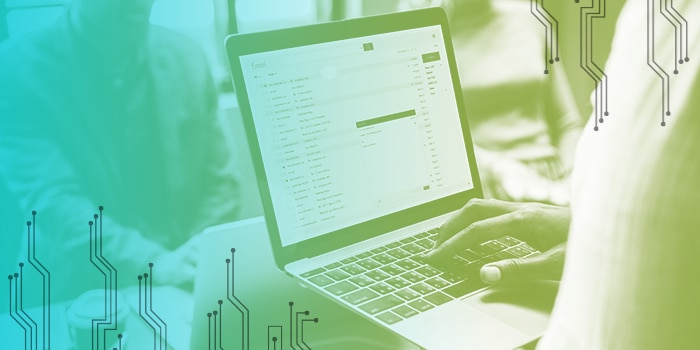Technology is a driving force in today’s business, regardless of industry. It’s how we connect to others a few feet away or across the globe—serving as a vehicle for communication that can spark creativity. Employees use smartphones and laptops nearly every part of the day. They can work remotely from anywhere in the world and solve problems with the click of a button.
As digital technology has transformed the life of the employee, it has also caused sweeping changes in IT. The
role of internal technology pros has expanded both in responsibility and complexity. We’ve transitioned from using extensive spreadsheets for asset tracking and email-based ticketing to adopting service desks that have powerful capabilities for a
configuration management database (CMDB) and service practices for incidents, problems, changes, and releases.
Technology will continue to evolve and organizations are going to become more reliant on it. While employees will turn to IT for support for their hardware fixes or service requests, there’s even more opportunity for IT to structure their workflow and communication processes. It’s valuable for IT departments to be proactive and anticipate changes in technology to boost
employee engagement and customer satisfaction.
Evolving Technology Effects on IT
The nature of the workforce is constantly changing. Just think about how your office is run today. You’re no longer confined to the walls of your office; the world is your office. There are cameras in your computer to do video conferences when you physically can’t be present for a meeting. Employees can now order office supplies or equipment, expensing the purchase through a mobile application. IT can also provide
service request forms through an
ITSM solution for larger purchases that require approvals.
A decade ago, email was king. Emails were the primary method of communication between employees and with IT support. Today, employees use applications such as Slack, WebEx, and Microsoft Teams to collaborate and shrink email chains. Many IT departments have also implemented a modern
service desk that provides self-service articles, AI-powered suggestions, automated request forms, and full-visibility into open tickets.
The “as a service” concept wasn’t as familiar years ago. Most companies used on-premises software, purchasing servers and data that were physically located within the data center of the organization. Today, many of those organizations have shifted some of that infrastructure to remotely-hosted servers, the cloud, or a combination of on-premises and cloud-based applications—known affectionately as
hybrid IT.
Changing Responsibilities for IT
With great developments in IT come great responsibilities for IT pros. In order for the organization to maintain success, it’s a good idea for IT professionals to learn, adapt, and integrate new technologies that are introduced. Some of these new responsibilities for IT include:
- Ensuring new technologies complement or can be integrated with tools already in use, e.g., a new service desk that can integrate with existing communications or HR tools
- Reducing tool redundancies by having a clear view of the organization’s technology landscape to help prevent addition of new tools that duplicate existing capabilities
- Minimizing risk by assessing longevity of the prospective new technology and the long-term value it can provide
- Negotiating pricing with and reviewing contracts for hardware, software, and tech services vendors
According to
Spiceworks, 44% of businesses plan to grow IT budgets in 2020. Once the budget has been approved, the IT department then has to determine how that budget will be spent. Organizations are now turning to IT to manage everything listed above and, with those approved budgets, IT has to make technology decisions that impact every department in the business. This brings a whole new set of challenges.
Addressing New Challenges to Stay Ahead
One way IT is evolving is by hiring teams with different perspectives and collaborative mindsets. In today’s complex IT environments, there are more specialized teams in infrastructure and operations, development, support, security, and so on. It’s important to find people with the appropriate skill sets for each discipline, but it’s also important to create an environment where those teams work together toward the common goal of providing services to the business.
Also, investing in these teams to attend trainings that will educate them on how to use the products and troubleshoot any unforeseen issues is beneficial to the organization as a whole. It’s more important than ever that each discipline of IT understands the way their strategy fits into the business plan for technology, and is prepared to work with other teams to ensure they maximize value.
From a service desk perspective, service level agreements (
SLAs) and operational level agreements (OLAs) are great ways to help keep employees satisfied with the services IT provides. This way IT continues to drive accountability even as technology and services evolve.
Focus on being prepared for change with the people and practices to support rapidly changing technology—from understanding the availability, scalability, and security of new technologies to engaging stakeholders on a recurring basis to assess where the organization is and where it’s headed.







